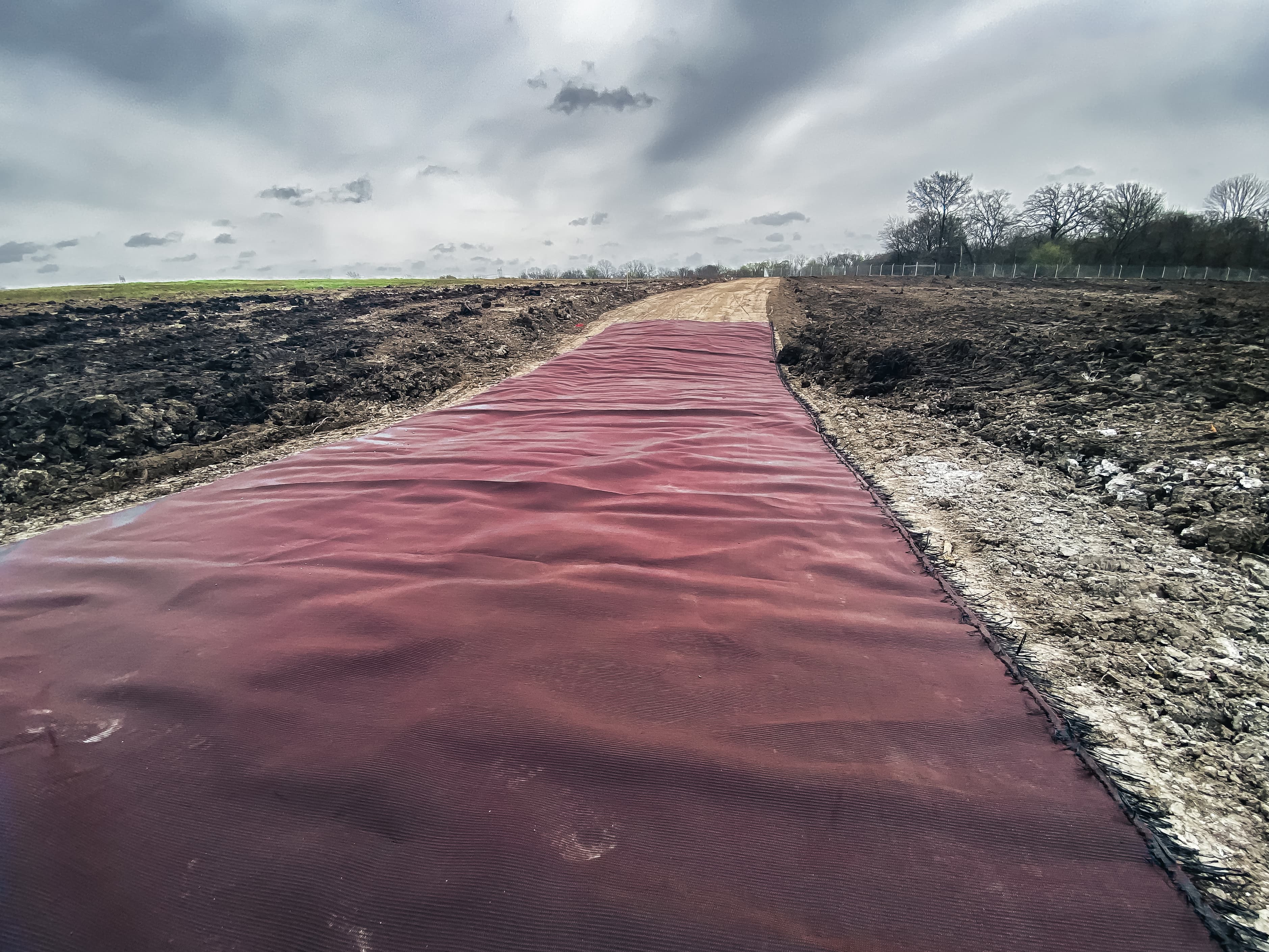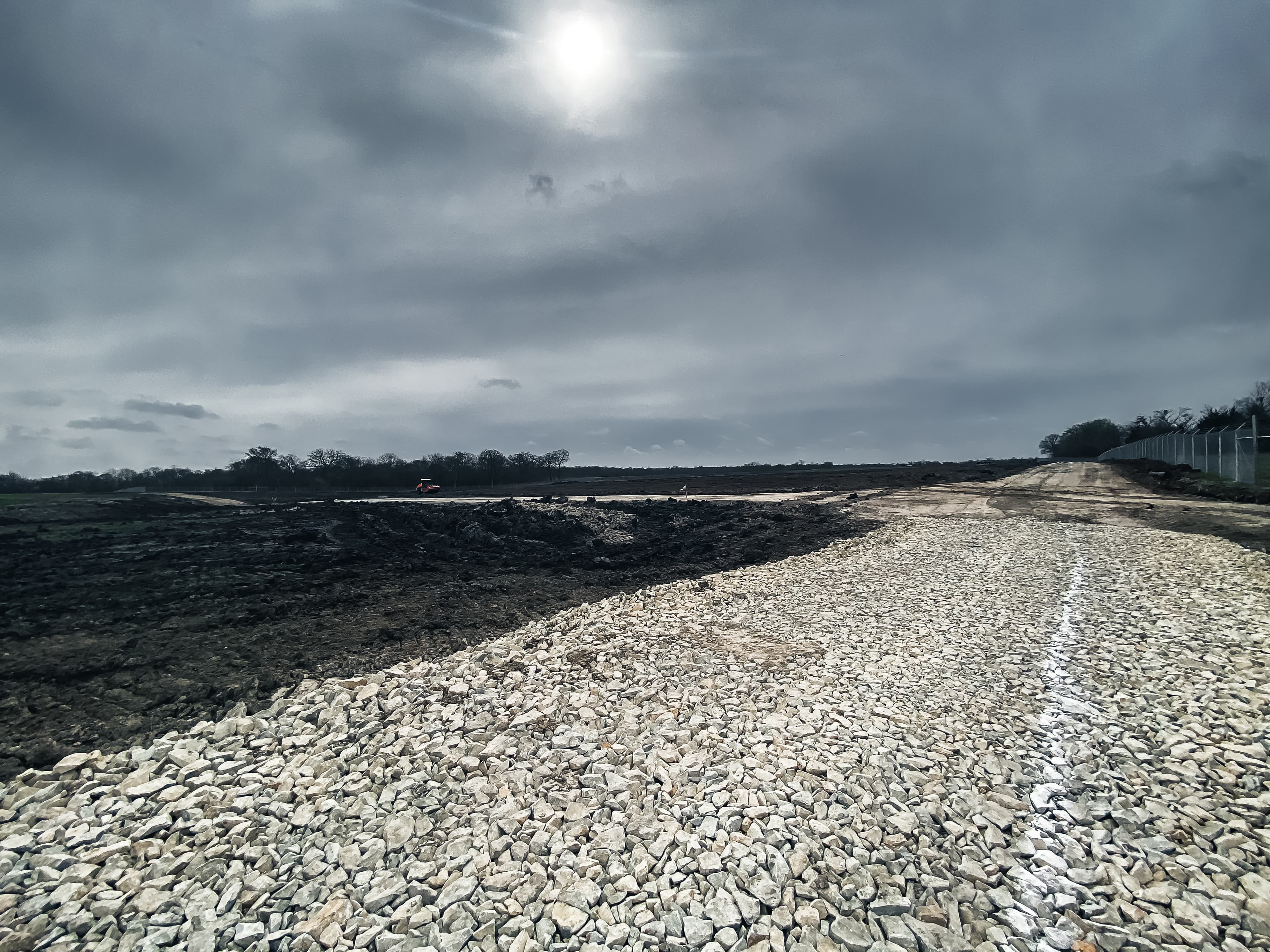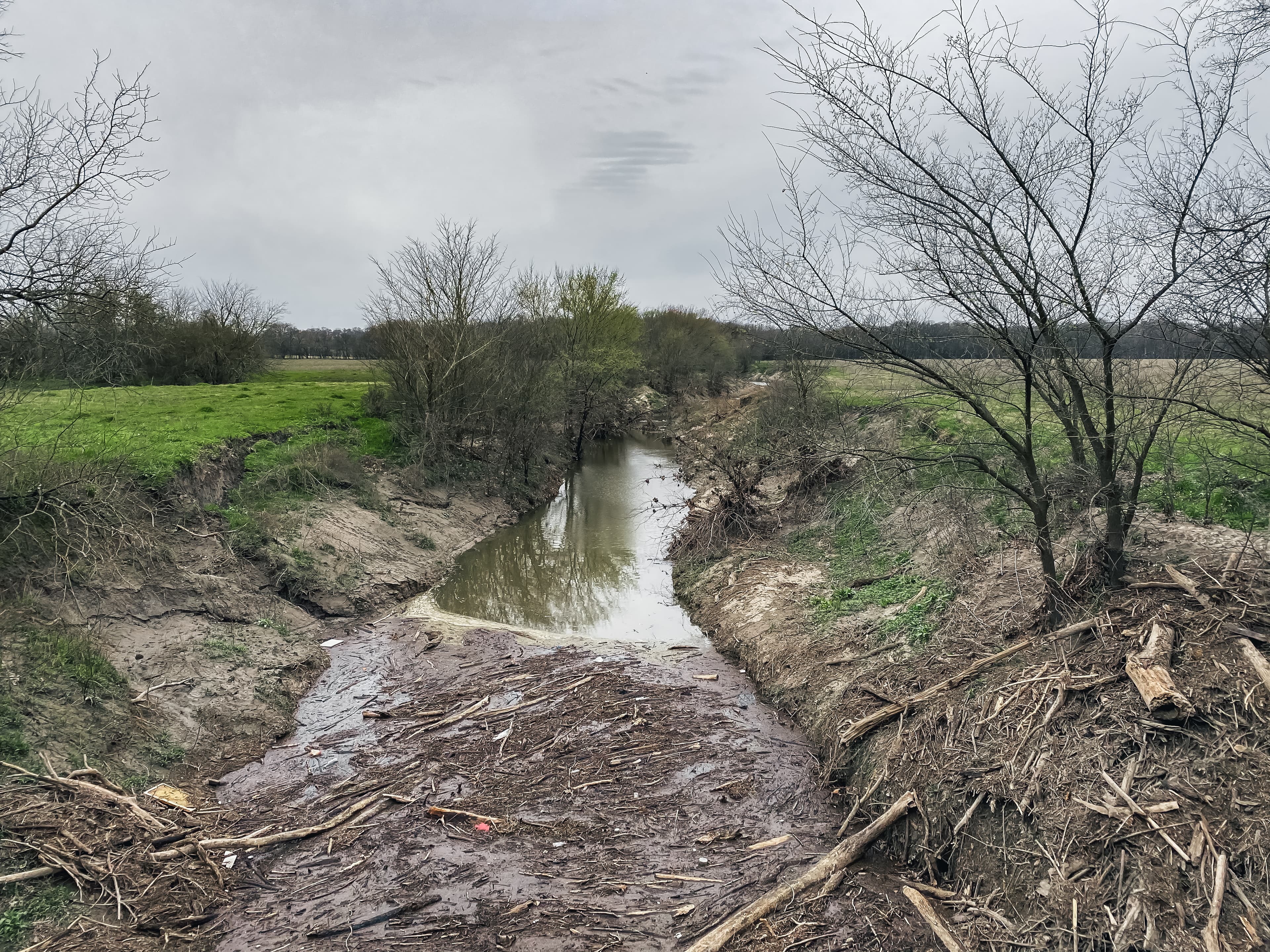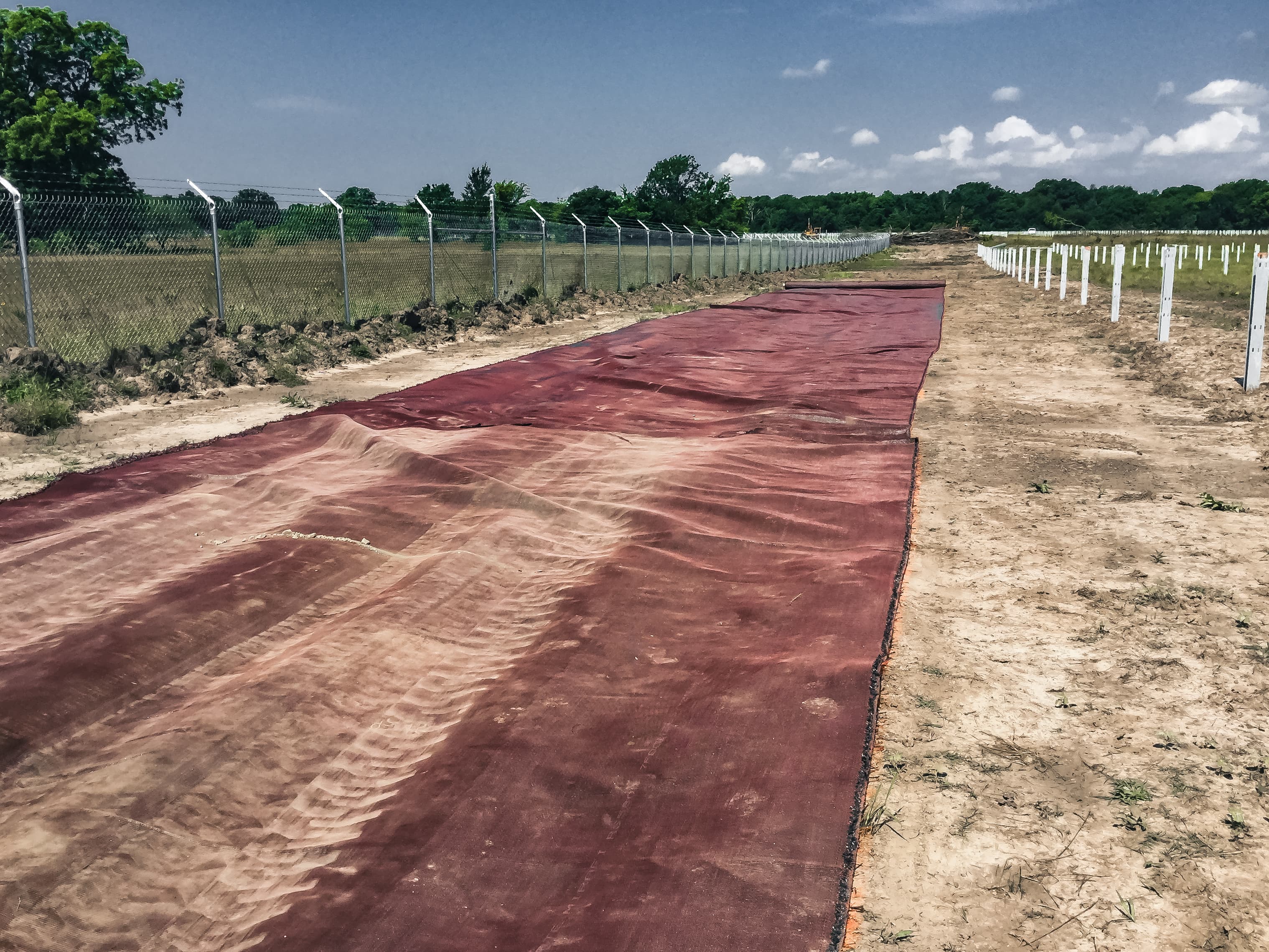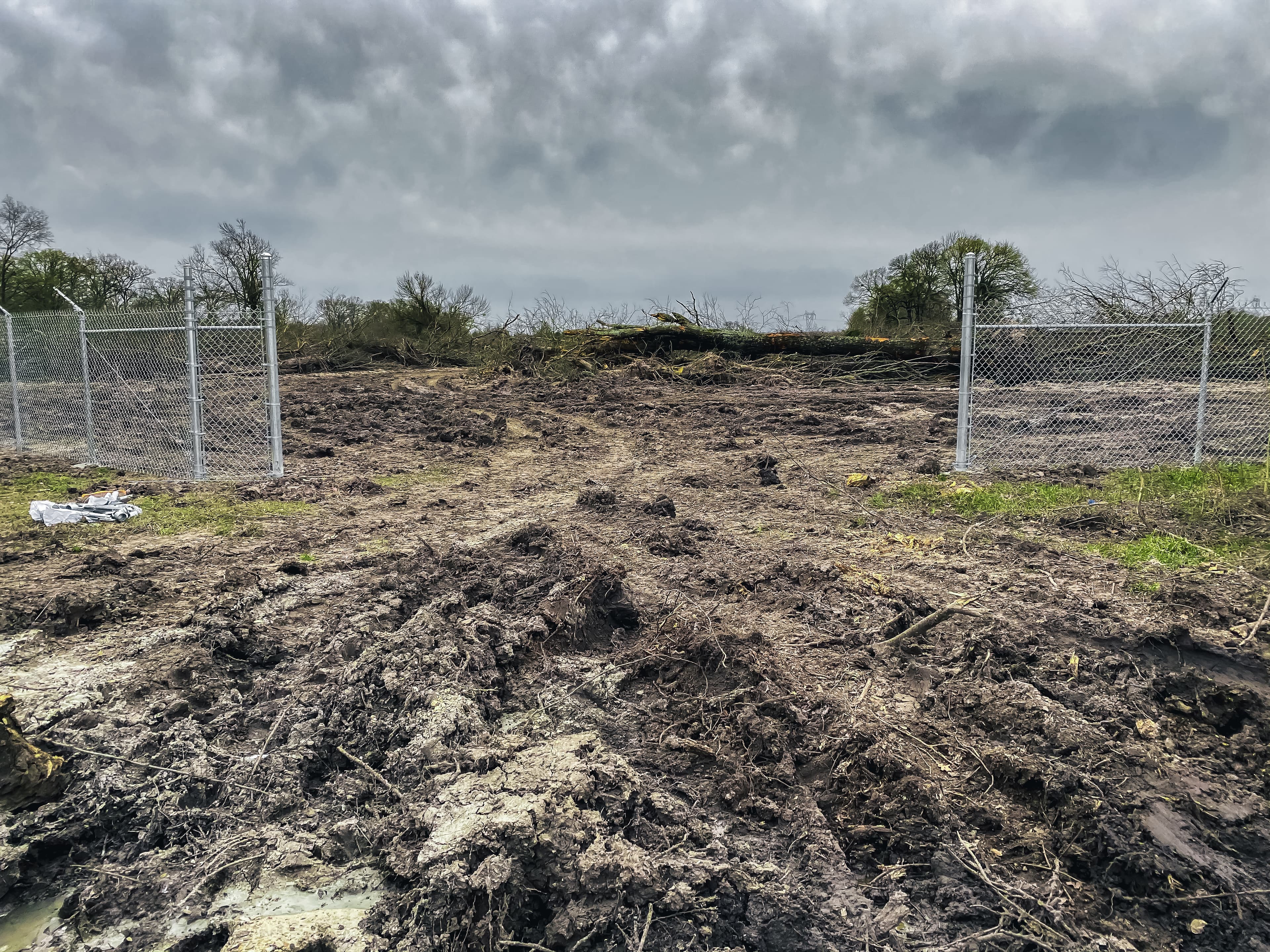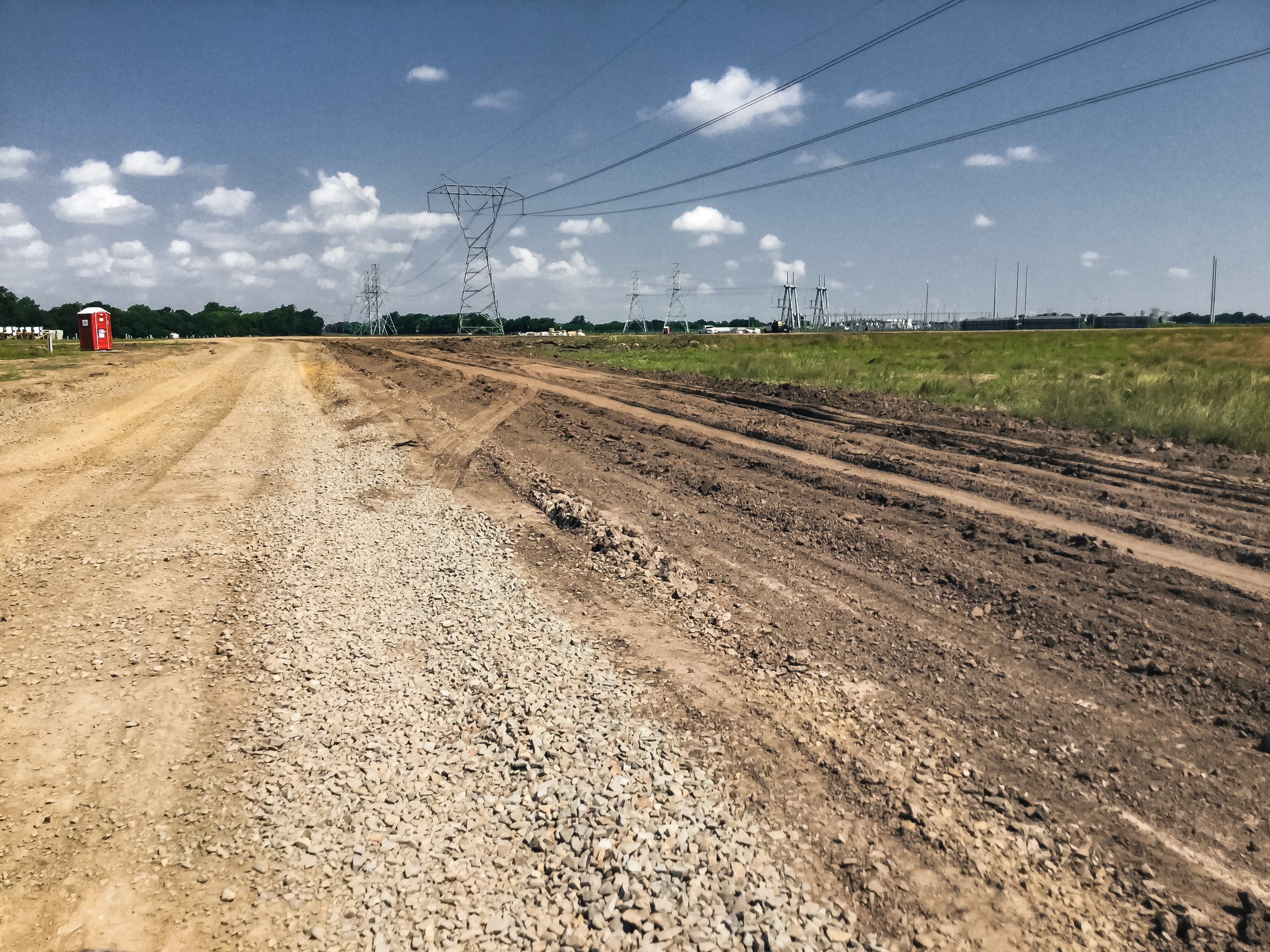Overview
Impact Solar Farm is situated on land leased to Lightsource BP by local landowners. This arrangement offers farmers an additional income source by leasing part of their land for solar energy production, thus supporting their family's legacy. The 260-megawatt solar project, representing a $250 million investment in the Texas region, generates enough energy to power approximately 41,100 US homes annually.
Challenge
The construction of Impact Solar Farm faced challenges in stabilizing haul roads for heavy machinery and materials. The geotechnical report identified medium to hard clays, including expansive soils prone to significant volume changes. The project team initially used lime stabilization for softer areas, but this approach quickly degraded. Given the soil conditions and subgrade strength within the Gironde-Han (2004) methodology parameters, this method was employed to determine the necessary reduced aggregate thickness for road stabilization. After considering various options based on the geotechnical report and on-site DCP testing (which showed CBR values between 1.5% and 3%), the team opted for a solution involving 6 to 8 in (152 to 203 mm) of flexible base over MIRAFI® RS280i geosynthetics.
Solution
The geosynthetic solution, developed by Solmax in collaboration with the engineer, proved easy to deploy and consistently effective across varying site conditions. It enabled the contractor to overcome frequent shutdowns due to equipment failures and weather-related access delays. This approach not only expedited the construction of the access road and reduced material costs but also provided durable reinforcement for the long-term. Additionally, the solution lessened the environmental impact by conserving natural resources and reducing CO₂ emissions. By minimizing the need for aggregate transport from a rock quarry located 15 miles away, the number of trucks required for the 60,000 yd² of haul road was reduced from 382 to 167, resulting in a decrease in CO₂ emissions from 44,100 oz (1,250.21 kg) to 19,400 oz (549.98 kg). Among the geotextiles considered, MIRAFI RS280i offered the most significant cost savings while meeting the project’s unique soil interaction and long-term performance requirements.
